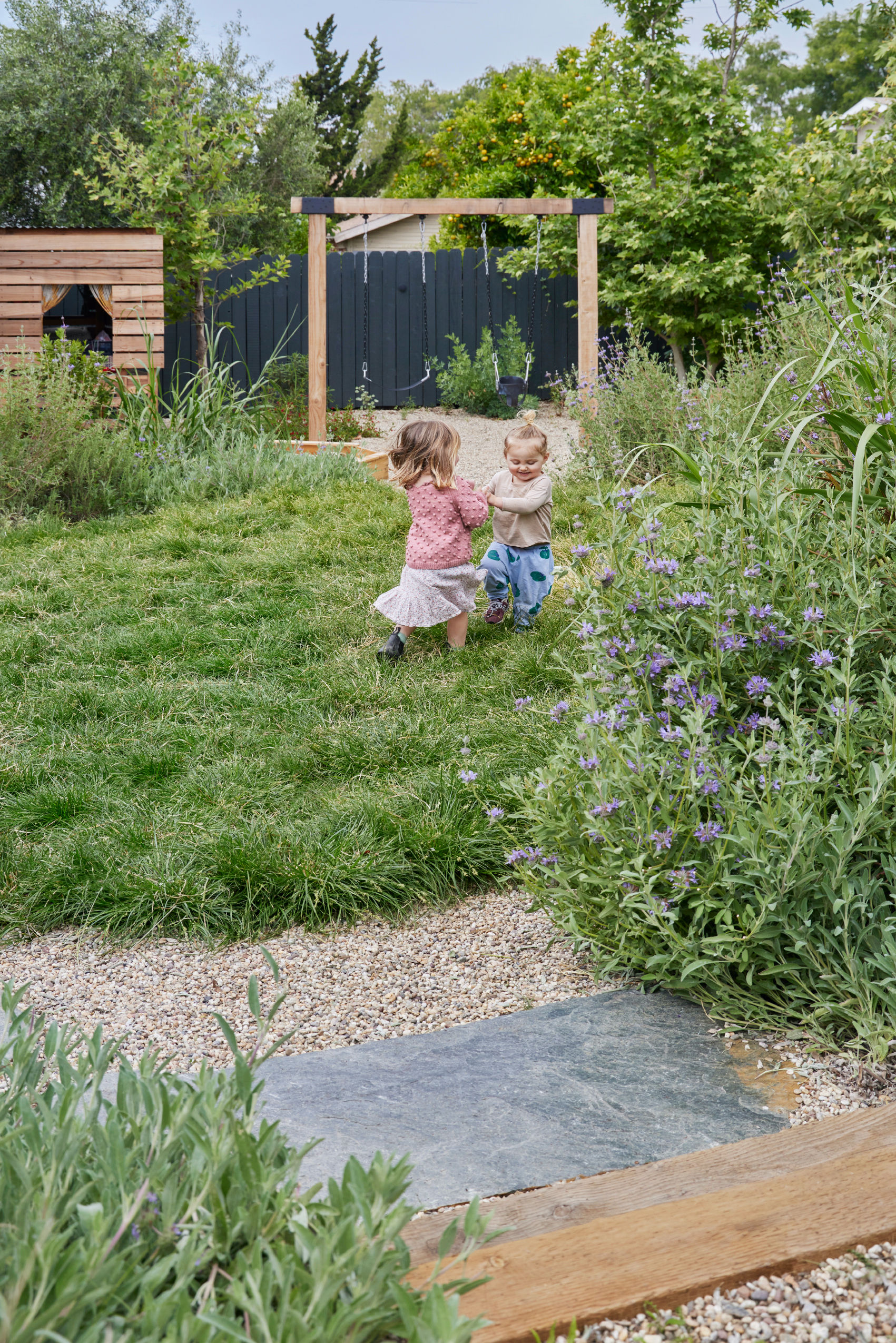The Lazy Lawn: 7 Tips for a Slow Mow Summer

Over the last few years, the No Mow May movement has spread faster than a patch of Japanese knotweed.
Started in the U K No Mow May encourages homeowners not to maintain their lawns the month of May the thinking being that letting the grass grow out allows wildflowers to...
...bloom which helps at risk pollinators and does away with the need at least for that month for lawn additives like fertilizers water and fossil fuel used for mowing two great goals
Eco-minded landscape design firm Terremoto is a proponent of the unmanicured lawn. What Wolfin would like us to embrace instead is a “slow mow summer,” a phrase coined by one of his colleagues at the University of Minnesota hoping to create an equally catchy name as No Mow May.
Photograph by Caitlin Atkinson, from The Future of Gardening: A Plan From Terremoto.
“We view Slow Mow Summer as a replacement for No Mow May that’s trying to best achieve the same goals all summer long,” says Wolfin.
Photograph by Hornbeam Arts via Flickr.
1. Mow less frequently.
“The easiest thing that folks can do is simply raise the height of their mower,” says Wolfin.
“If you mow a plant down, from say from 18 inches back down to a conventional height of, you know, four inches, it’s going to really hurt—and potentially kill—that plant,” says Wolfin.
2. But don’t let your lawn get too long.
So, instead of mowing on a set schedule pay attention to the length of the grass, never cutting more than a third, so if you let grass grow to 6 inches, then cut to 4 inches or if you let it grow to 4 inches, only cut a little more than an inch.
3. Weed strategically.
Allow plants like clover (pictured is a clover bloom), violets, and barren strawberry flower and go to seed.
Photograph courtesy of University of Minnesota Extension.
Photograph by Mathew Millman courtesy of Scott Lewis, from Gardening 101: Blue Grama Grass.
The perennial grass Bouteloua gracilis ‘Blonde Ambition’ turns a tawny gold in autumn, mimicking the color of the surrounding hillside in a Napa Valley garden designed by Scott Lewis.
To maximize conservation choose fine fescue grasses, which Wolfin says have 1/6 the fertilizer requirement of traditional turf grass and need to be watered only about once every 3 to 4 weeks; they’re also incredibly slow-growing, so you might need to mow only twice per year.
6. Overseed with wildflowers.
Bees love white clover.
Photograph courtesy of University of Minnesota Extension.
While Dutch white clover isn’t native, Wolfin says researchers at the University of Minnesota observed “a ton of bee diversity” on white clover—and it costs a fraction of what a native plant like pussy toes would (but if you have the budget, pussy toes are a great way to diversify your lawn!
7. Rewild a section of lawn.
Native plants and wildflowers make up this “wild lawn” in Oregon.
Photograph by Erin Boyle, from DIY: Wild Lawn.
Wild strawberries now provide tasty treats for my family when not gobbled up by our backyard chickens Bumblebees adore the plantings of partridge pea Stans of ferns...
...provide cover for chipmunks and squirrels Rewilding with ground covers has quickly transformed our once barren lawn into a vital habitat Wild strawberries and less yard work